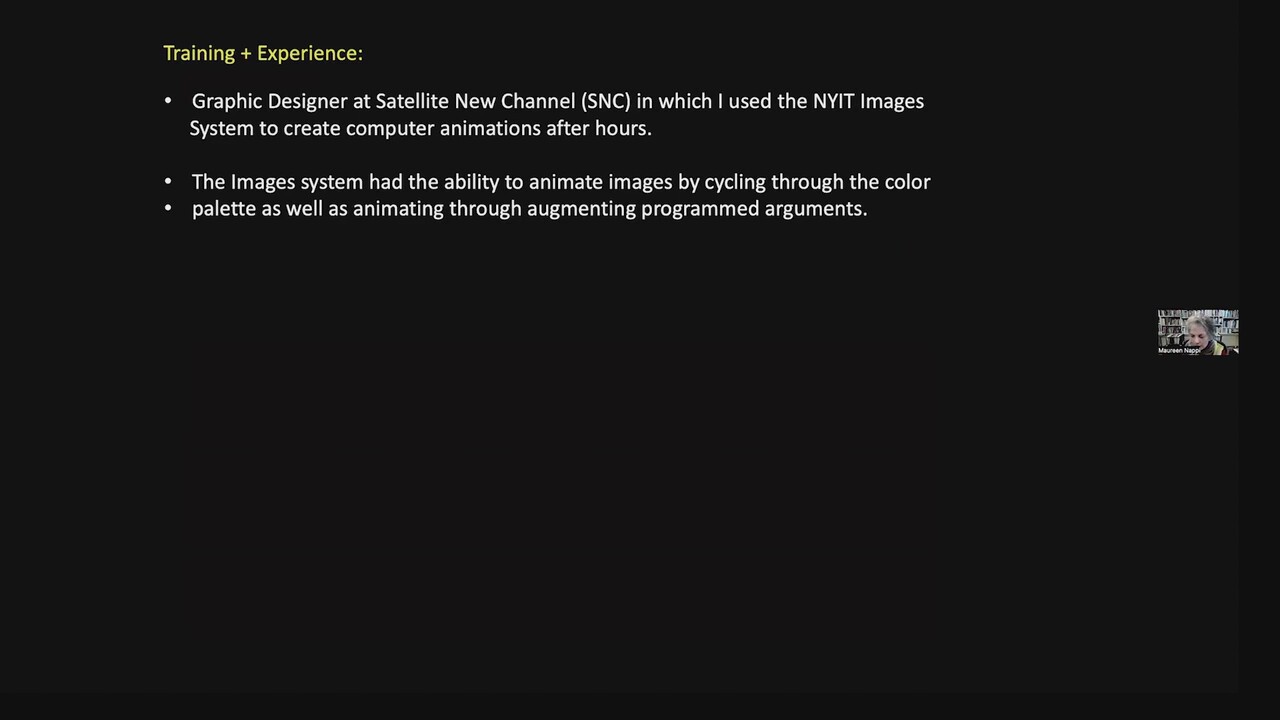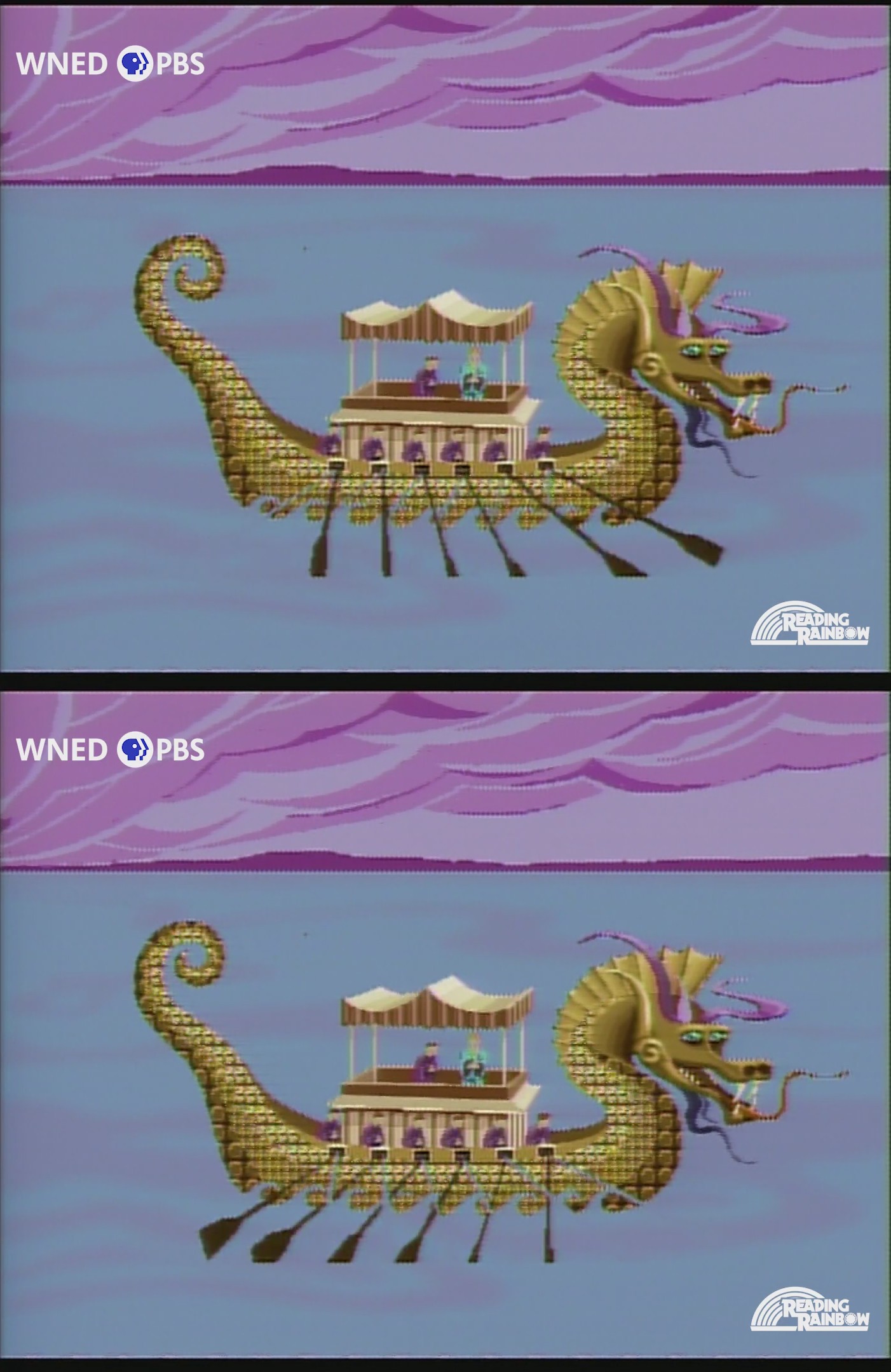


A much higher quality reading rainbow copy was uploaded recently, so the lion kingdom was caught up again in the paint program. Helas, there were no watermarks in those days. That has remaned an enigma since lions 1st saw it in 1983. It was a 1 off program written in the New York Institute of Technology computer graphics lab called Images Paint System.
Then there's 1 hit for a siggraph presentation.
https://dac.siggraph.org/pioneers-digital-art/

After some heroic network capture scraping & transcoding, a live stream was on the hard drive. Helas, it was more about the art & the artist rather than the tool or what it ran on. At 47:00 she revealed the program only achieved animation by cycling the color palette, hence why the oars looked like they did. There's a video of clearly palette based animation in realtime.
The higher resolution reading rainbow footage showed a full screen text menu mode with a barely visible pointer over it. It might have been a text cursor.




The presenter selects "get brush" from 1 page of options. This shows multiple pages of brush titles but no images of the brushes. It looks like he started with "/brushes/dot9 solid" selected & changed it to "/brushes/cluster solid" from this screen.


The next footage flips back to the graphics screen where he does a paint operation & then fills by similar color. Young lion was amazed by the number of colors. There's a choice between drawing patterns & solid colors. It's possible that the pattern was actually selected from the brushes menu & it was hard coded to be those colors.
There's a zoom function. It's all the same as any modern program, but with a much more spartan interface. It shows how PC paint & Mac paint in the day were really incremental updates to previously devised tools.

The common motif in those days was a 100% zoom & a magnifying rectangle. Zoom mode was entered by moving a fixed size rectangle over an area to magnify. We thought that was how it was always going to be. There was no concept of the mane window having multiple zoom levels with the same tools.
Some enhancement shows the text menus were always on a VT100 in the back while the foreground monitor always showed graphics. Both had to be accessed from the same tablet. He actually said VT100 on a kid show. The tablet might have been multiplexed with the serial port.
Given all the fuss about replicating vintage programs lost to time, this might be a good one to replicate either on a C64 emulator to discover how close a C64 could have gotten or in javascript. Lions wouldn't invest any more than javascript but the real discovery would be from replicating it on a C64.
The XOR triangle cursor would have been tricky on a C64. Sprites didn't have XOR. They only had transparency. It would entail XORing the bitmap itself. Pinball construction set used exclusively XORed bitmap operations & they were still fast.
To get the palette overlay & zoom would have taken a double buffer. There's a history menu option but no obvious undo. He uses fill rather than undo to undo an operation.

The 2 oar positions had the same colors so they were using 2 palette entries to draw 1 output color. The commodore couldn't map all 16 palette entries to all 16 colors. It had 2 global palette entries it could map to all 16 colors. Every 8x8 block had 2 more palette entries to map to all 16 colors. It would have to back up the 8x8 palettes to change those.
A practical drawing program would have to fix the global palette to some user settings. That leaves only 2 palette entries per 8x8 block for a drawing command, hardly the experience on the tube.
 lion mclionhead
lion mclionhead
Discussions
Become a Hackaday.io Member
Create an account to leave a comment. Already have an account? Log In.